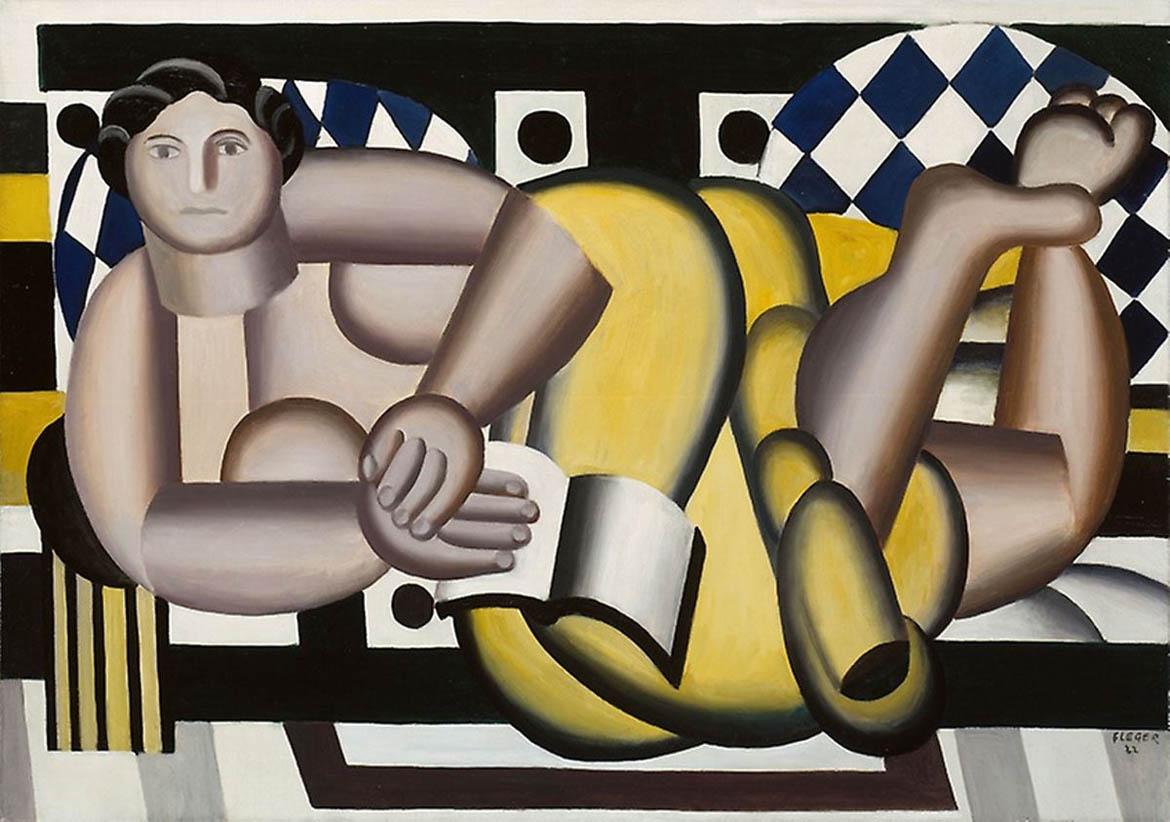Léger, Fernand (1881-1955)
Femme allongée (Reclining Woman)
1922
Oil on canvas, 64.5 × 92 cm
Art Institute of Chicago, Chicago
Fernand Léger first saw the work of the Cubists Georges Braque and Pablo Picasso at the Paris gallery of Daniel-Henry Kahnweiler. Around 1909 Léger began to experiment with geometric shapes, complementary colors, and strong outlines, although his paintings remained largely nonrepresentational until after World War I. His involvement in the war had a profound impact on his work. In the years following, he introduced volumetric forms that resembled pistons and pipes into his compositions, joining others in the Parisian vanguard in charting a more sober, conservative course that placed renewed emphasis on objective observation. Substituting hard metallic tubes for pliant flesh and flat patterned disks for soft and dense pillows, the artist updated the classical figure of the odalisque (a female slave or concubine often pictured in the history of art as a reclining nude) with his particular blend of Cubism and machine aesthetics. Reclining Woman demonstrates Léger’s interest in producing “everyday poetic images”: paintings in which the manufactured object is the “principal personage,” shown as precisely as possible to reveal an absolute sculptural value rather than sentimental associations. This work exemplifies the Purist style, a kind of industrial classicism that focused on utilitarian objects. Léger hoped that through such paintings, art would become accessible to the whole of modern society rather than to just a privileged few. (AIC)
